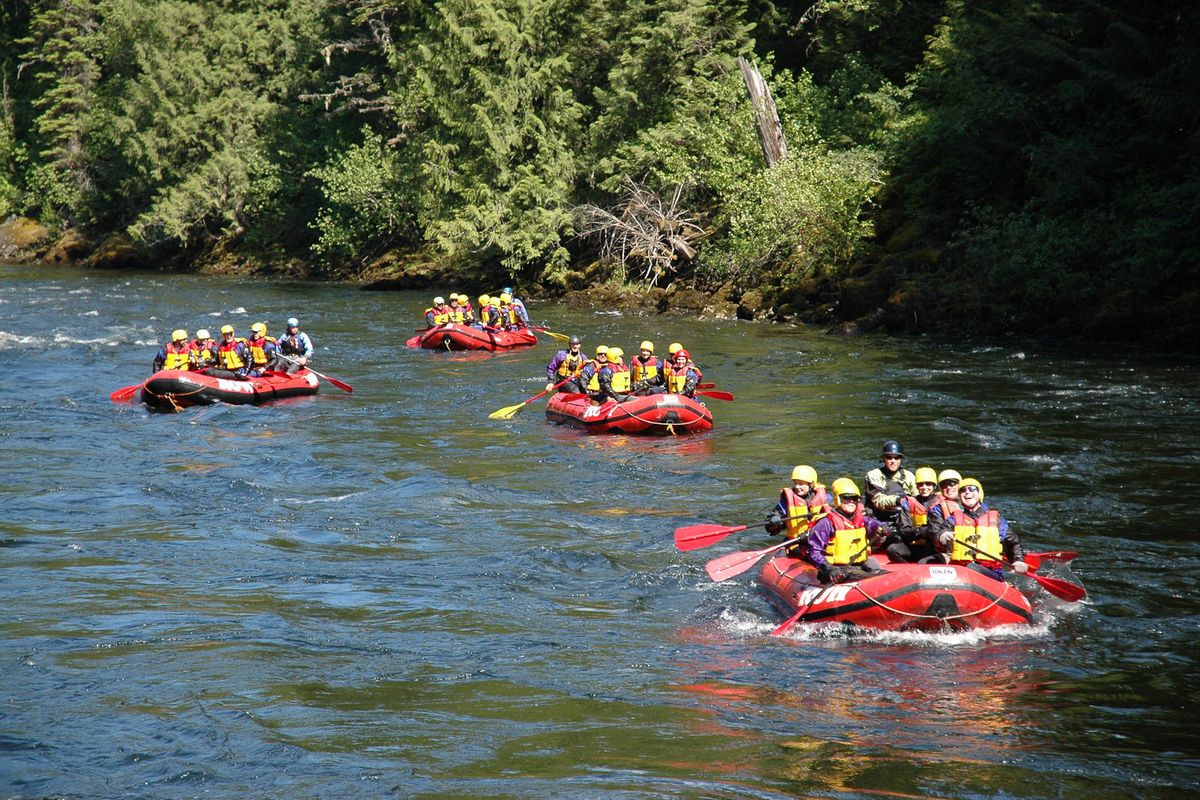One sport’s rapid rise
Taking the plunge requires scouting your options first

They are called the catcher’s mitts. The term refers not just to certain baseball gloves but to whitewater rafting guides who rescue people who fall overboard.
For those who never have gone whitewater rafting and want to, here is a primer to get you out on the water this year – and perhaps avoid a situation where you need the catcher’s mitts.
The opportunity to go presents itself in the spring and summer. The sport isn’t unique to our region but some of the rivers are the best in the West. Which river to run may be the first choice. We have so many great, nearby rivers. The Lochsa River is the premier whitewater destination. But there is also the Salmon “River of No Return,” Snake River through Hells Canyon, Clark Fork, Grande Ronde, Middle Fork of the Salmon, Selway, Clearwater, Kootenai, St. Joe, Moyie and even the Coeur d’Alene.
Farther south are the Payette, Bruneau and Jarbidge rivers. No wonder Idaho is called the wild rivers state.
If you are going with a guide, choosing your comfort level will be more important than skill level. May brings an awesome volume of melt water cascading out of the mountains and is the time to run the most powerful rapids. The famous river that fits this description is the Lochsa, east of Lewiston. On such a river, rafters are expected and are needed to paddle hard as they pass through the powerful whitewater rapids filled with large boulders called “rock gardens.”
Rafters also need to be in reasonably good shape, not only to paddle but also because of the possibility of being washed out of the raft. A paddler wants to be able, with a life jacket on, to swim and be pulled out of the water. The explosive nature of the rapids, the physical exertion of paddling, the water spray hitting the face, and the risk of falling overboard makes this kind of whitewater rafting an exhilarating experience. Here is an encounter with nature that makes some come back for the thrill year after year.
Of course, then there are the flatter, less strenuous rivers that are more relaxing, with fewer rapids. Many of these kinds of trips can be found statewide. There are 3,000 whitewater miles to choose from, some all summer long and even into September. The length of almost all the rafting seasons depends on the amount of snowpack that accumulates in the mountains the previous winter. By midsummer some rivers are just too shallow for rafting.
Rapids are described by a whitewater classification system:
Class I: Moving water with a few riffles and small waves. Few or no obstructions.
Class II: Easy rapids with smaller waves, clear channels that are obvious without scouting. Some maneuvering might be required.
Class III: Rapids with high, irregular waves. Narrow passages that often require precise maneuvering.
Class IV: Long, difficult rapids with constricted passages that often require complex maneuvering in turbulent water. The course may be hard to determine and scouting is often necessary.
Class V: Extremely difficult, long, and very violent rapids with highly congested routes, which should be scouted from shore. Rescue conditions are difficult, and there is a significant hazard to life in the event of a mishap. The upper limit of what is possible in a commercial raft.
Class VI: The difficulties of Class V carried to the extreme. Nearly impossible and very dangerous. For teams of experts only. Involves risk of life. Class VI rapids are not commercially raftable.
These whitewater classifications will help you decide what river and rapids are best suited for your comfort level. Also, discussing your concerns with an outfitter can ease any anxiety you may have.
Clothing
Outfitters supply all the clothing that you will need, especially in the spring when the water is very cold, including a wet suit, boots, jacket, helmet and a cap to put on under the helmet. Rafters need to bring underclothing (not cotton) that wicks moisture away from the body, socks, gloves, sunscreen and sunglasses with a way to keep them on your head in case you get wet.
Outfitters
Scanning the Internet there are numerous outfitters to choose from. The best source is the Idaho Outfitters and Guides Association Web page. Click on “rafting” for a listing of all the state’s whitewater rivers. Decide on a river and the guide companies that offer trips. Each river is described and includes the range of whitewater rapids to expect as to classification, for example the St. Joe River has class I and II rapids.
Like most sports, whitewater rafting has its own jargon. A catcher’s mitt is a single river guide in a raft that runs each rapid first, before other rafts. If a following raft loses passengers, the guide is there to pull them out of the water. It is a safety procedure and all the companies stress that safety is their first priority.
There are many rivers and whitewater stretches in Idaho. No matter what your age or your level of fitness, there is a river with your name on it. This year, make the move to run a river. It will give you bragging rights, besides being a great time.